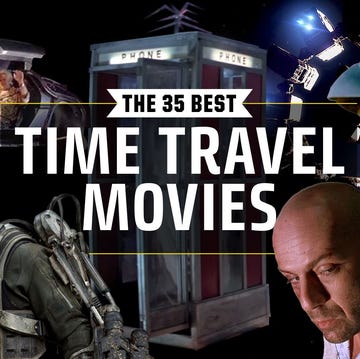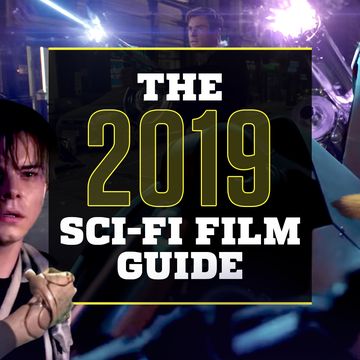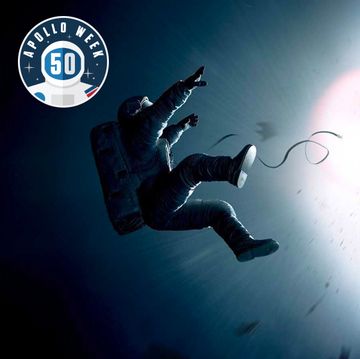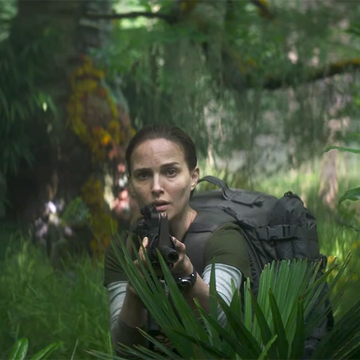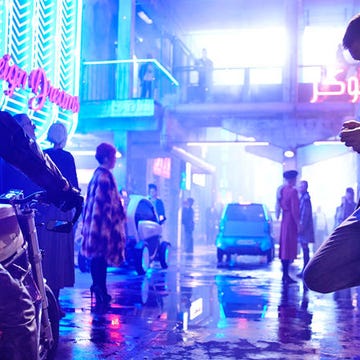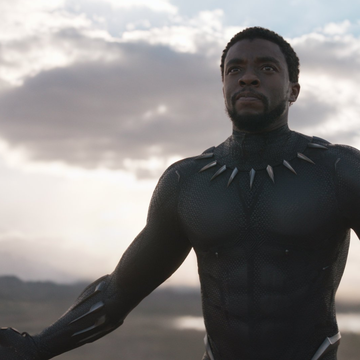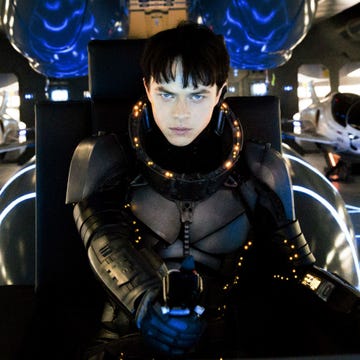WARNING! Medium spoilers ahead!
Wormholes. Time dilation. Black holes. Generation ships. The Grand Unified Theory of particle physics. Tesseracts observed from the fifth dimension. Computer AI so humanlike it knows when to lie for efficiency's sake.
Did I leave anything out? Possibly. But each of these geektacular talking points figures prominently in Christopher Nolan's highly anticipated outer space epic Interstellar.
With this film, the overused buzzword "epic" is wholly earned. Everything about this two-and-a-half-hour picture is big. In fact, even the title undersells it. Our ultimate destination is intergalactic, and ultimately inter-dimensional.) Nolan shot generous chunks of the movie on 65mm IMAX stock, and if you are lucky enough to see Interstellar at a true IMAX theater, the gorgeous images of planets are like a punch to the heart.
Lazarus
The list of amazing planets begins with the Earth. Interstellar's first act happens in a rural environment some time in our future. Some kind of crop blight has disrupted the food supply, and that's not all that's gone awry. There has been civic unrest, probably a war, and some drastic changes in government. We get only peeks of the new society—enough to tell us there is a top-down distrust of science, machines, and manufacturing (textbooks now say the moon landing was a fraud). And most people, at least where we are, are farmers.
But Cooper (Matthew McConaughey) doesn't want to be a farmer. He used to be a top experimental pilot (back when that was still allowed), and his young daughter has the right stuff to be one, too—she's feisty, independent and likes math. Through some weird Twilight Zone-ish events, father and daughter find a hidden spot out in the dirt that—aha!—is host to a secret and enormous NASA program. Everyone is so shocked by the discovery that they blaze past the question of how Cooper found it. (The movie hopes we'll forget until the big finish.)
Here is where McConaughey's Cooper encounters Michael Caine as Dr. Brand, and Anne Hathaway as his daughter, another Dr. Brand. Just as the first two-thirds of Nolan's Inception was filled by Leonardo DiCaprio bombarding Ellen Page with exposition, Cooper endures a double-team of ceaseless yapping by the Brands, who set up the rest of the story.
Soon, we are told, there will just be no more food on Earth. But it looks like there's a way out. Helpfully, a gravitational anomaly has appeared near Saturn. Probes have shown it to be a wormhole, and one-way missions to the other side have already been launched. These missions are led by a character named Dr. Mann. (Hey, no one every accused Christopher Nolan's dialogue of being subtle. The mission is called "Lazarus," and someone later says "I feel like I've been raised from the dead!")
The team on Earth has received pings from three of the twelve planets beyond the wormhole. Now a team must go up, assess the data, and figure out which world is ripe for human colonization, thereby saving the species from sure extinction. Cooper, the only one around who has ever flown into the stratosphere, is now on board for the ride.
So, what happens when we find a habitable planet on the other side of the wormhole? There's a Plan A: NASA has an enormous ship that can transport countless people, if they can just, oh, figure out how to unify general relativity and quantum mechanics. But Michael Caine is working on that, so don't worry. He even points at an equation. Plan B, the more sober choice, is to take a bunch of fertilized eggs to the new planet (if there is one) and start humankind over.
The Sound of Silence
"Goldilocks and the Three Bears" teaches us that it's the third planet of the three they're checking out that's gonna be the winner. But a lot has to happen to get us there. For starters, everyone needs to quit blabbing and have some space adventures.
Once the ship takes off, we're in business—and you finally get to see some of the things that make Interstellar fantastic. First, Nolan has created some of the best images of imaginary ships and orbital stations ever seen in a movie, and blessed with (everyone get ready to cheer) cinematic silence within the vacuum of space! We did it, folks! Hollywood finally heard our nerdy complaints and made a sci-fi movie with space-based explosions on mute.
The other big win for nerds is TARS, the movie's awesome robots. Prepare to see TARS and his buddy CASE listed in all future "best movie robots ever" lists. They take up space like Forbidden Planet's Robbie, are "in the system" like 2001: A Space Odyssey's HAL, and they look like nothing you've ever seen. At rest, they are gray-ish chrome slabs. They walk like Jacob's Ladder toys. But when the other-worldly excrement hits the fan (and there's one humdinger of an action set-piece), they can contort themselves into useful geometric shapes and crack jokes at the same time. (There's a little green light that appears when they're kidding, just so everyone is on the same page.)
A Blockbuster's IQ
This is all a remarkable set-up for what is an undeniably exciting movie. I can't lie and call it perfect, however. Some sections drag, and perhaps unavoidably, since Interstellar's length is key to its essence. We are talking about a film that draws some of its strongest emotions out of time dilation and relativity—through one-way communications, our heroes watch the loved ones left behind age in what, to the space travelers, feels like a blink. These scenes are touching, but the movie has a rambling quality that is hard to shake.
In another example, it takes two years to get to Saturn, and only then does the film reveal some really important and dangerous plot points. If you got annoyed during Inception when it was mentioned that, oh by the way, dying in this particular dream was not the usual deal, then prepare to be bothered by this kind of thing in Interstellar.
Also, Nolan employs a cross-cutting technique that worked quite well during the earlier film, that just makes no logical sense here. Nolan wants to remind you that everything is connected, but the technique creates a feeling that what is happening out there and on Earth is occurring simultaneously, when so much of the film's spirit is about the consequences of lost time.
As a result, this movie's humanist message comes across as a little bit as a "get out of jail free" card. I won't ruin it for you, but I will say that while Nolan has always been a dazzling director, he has not been a very warm one, and the complexity of this story makes it hard to take the nutso ending as the spiritual catharsis it wants to be.
But I will forget these faults for a moment. What's exciting is that Nolan had the clout to get this kind of movie made and dropped in the laps of multiplex-goers. So few blockbusters have an IQ over 50. It's important to celebrate this one, even if it comes up a little short.


